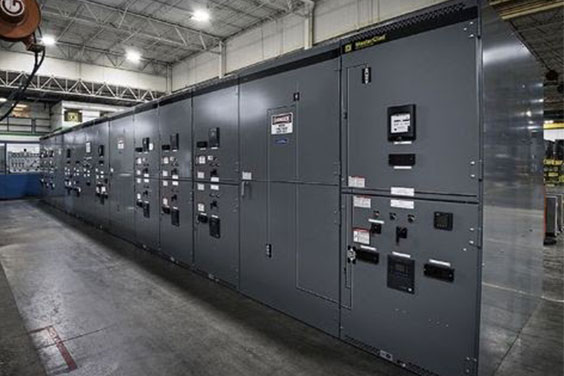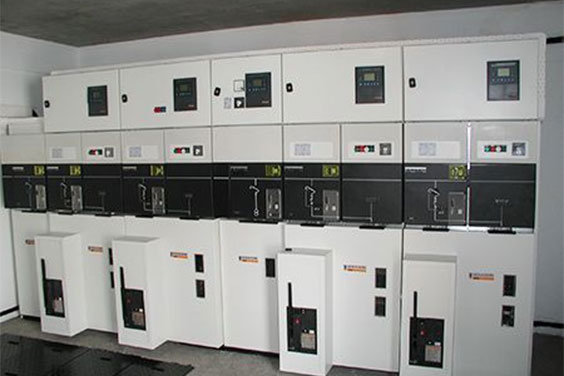
Metal enclosed and metal clad switchgear are two distinct types of switchgear. It is more accurate to argue that metal clad is a particular subset of metal enclosed, just like a square is a particular subset of a rectangle. Since these 2 categories of electrical switchgear are so comparable, it can be difficult to tell them apart at times.
The obtainable fault currents, safety considerations, and how maintenance impacts the systems are all unique. And these are the kinds of details you’ll need to know in order to decide which style is appropriate for your specific scenario.
What is Metal Clad Switchgear?
ANSI C37.20.2-1987 defines metal clad switchgear as metal enclosed switchgear with the three necessary features:
- Detachable (draw out) type switching as well as interrupting devices able to move between connecting and detach positions with self-alignment and self-coupling
- Automatic shutters which conceal primary stabs or studs when the detachable part is detached, tested or removed.
- Every primary bus conductor including connections is completely insulated.
In order to ensure that the switchgear you have adheres to all the ANSI standards, always lookout for reputable medium-voltage switchgear suppliers.
Benefits Of Metal Clad Switchgear
- Customization: One of the most appealing features of metal-clad switchgear is its capacity to be fully customized to meet the needs of the client. The degree of customization is determined by the complexity of the system application.
- Maintenance requirements vary depending on the customer application requirements. Some applications need less switching of the equipment. Its primary role is to act as a disconnect that is always in the ‘on’ position except for an annual shutdown.
- Metal-clad switchgear provides increased safety measures that are not required in regular metal enclosed switchgear. Metal-clad switchgear, for example, is entirely compartmentalized, which means that the low voltage compartment may be accessed without enabling access to any other active elements in the switchgear. The main bus and the approaching bus are segregated as well. It is a completely grounded unit incorporating grounded barriers, mechanical switches, circuit breaker shutters, plus a fully insulated bus that separates operators off medium voltage parts.
Why Should You Choose Metal Clad Switchgear?
- Metal Barriers that are grounded enclose all of the Live Parts.
- Shutters that operate automatically.
- Bus with Insulation.
- Long Mechanical & Electrical Life.
- Reliable Circuit Coordination.
- Proven transformer switchgear capabilities.
What Is Metal Enclosed Switchgear?
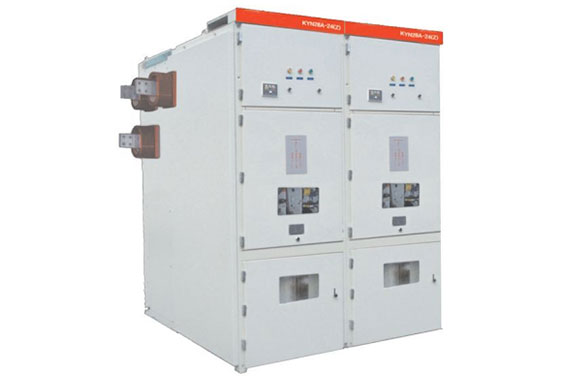
ANSI C37.20.3-1987 defines metal enclosed switchgear as metal-enclosed power switchgear that includes protective relays, power fuses (current limiting or non-current limiting), a bare bus with connections, instrumentation transformers, control wire, and accessory devices.
The load interrupter switch component is governed by ANSI C37.20.3, C37.20.4, and C37.22. Traditionally, the component requirements for such devices were those for high voltage air switches. (See C37.30, C37.32, C37.33, and C37.34 for further information.) While the majority of these standards include temperature increase limits, ratings, service conditions, testing, and construction, they also cover current ratings such as rated momentary currents and rated short-term currents. These values are often referenced back into the main component switching device standard.
Why Should You Choose Metal Enclosed Switchgear?
- Constant current ratings of 600-1200A
- Short time ratings of 25-50kA without fuses
- Limited Switching (150-1000 mech. Operations typical)
- Typical fuse protection
- Lower operational expense ($25K-$30K/ Switch NEMA1)
- Ease of Maintenance
- Fast Shipping (Depends on stock availability – contact reputed custom switchgear manufacturers)
- Interrupter switches are often used for load switching with fuses for fault protection.
- Proven substation switchgear
Metal-Clad Definition
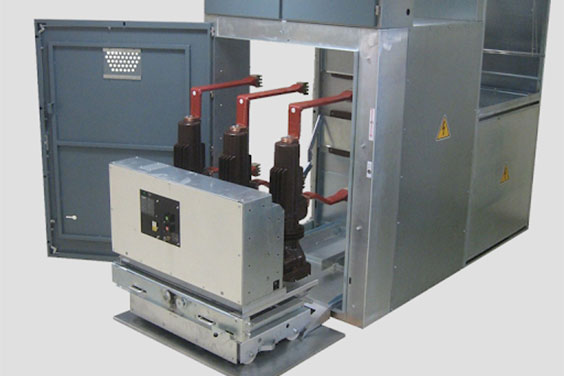
Because metal clad switchgear (IEEE C37.20.2) is a subset of metal encased switchgear, it has many of the same exterior features. With the exception of minor ventilation and viewing apertures, it is completely encased in a metal shell on all sides. Furthermore, the entire shell is grounded, however, the similarities end there.
Metal clad is distinguished from metal enclosed since all internal parts are individually encased in metal, or compartmentalized. Each of these components can also be independently insulated and grounded, as in the case of bus bars.
Furthermore, the various compartments may be removed individually with minimum impact on the entire system, which is a significant benefit. When comparing metal clad versus metal enclosed, all of these modifications add to the increased cost of metal clad.
Metal Enclosed Definition
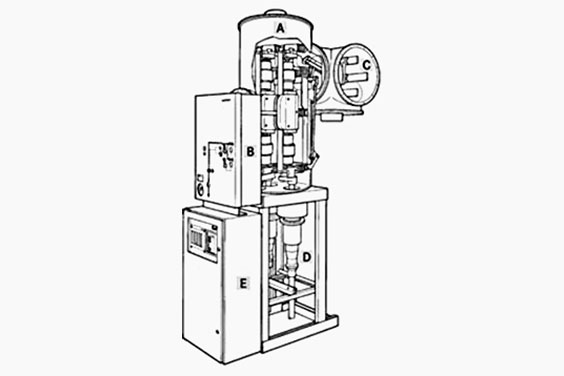
The term “metal enclosed switchgear” is self-explanatory. This is switchgear encased in a metal casing. With the exception of minor ventilation and viewing apertures, all surfaces of the interior components are metal. Furthermore, the outside shell is grounded to promote overall system safety.
Metal enclosed is divided into three subcategories,
- Metal covered
- Low voltage power circuit breakers (IEEE C37.20.1)
- Metal encased interrupters (IEEE C37.20.3).
MEIs (metal enclosed interrupters) are essentially reduced versions of metal covered switchgear.
There are little or no barriers between interior parts in the two types of metal enclosed switchgear. When the panel is opened, most of the components are in one location. When compared to metal coated solutions, this characteristic helps to lower the costs.
Differences Between Metal Clad and Metal Enclosed Switchgear
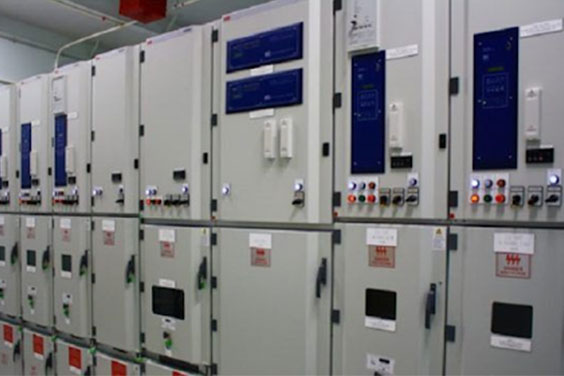
The following points discussed are a comparison of metal clad vs metal enclosed switchgear:
- Metal-clad is approved for 10,000 operations, but metal-enclosed is often rated for less than 1000. (Exceptions Exist)
- Load break ratings are not typically provided for metal-enclosed products.
- Metal-clad fusible gear is protected by protective relays, and metal-enclosed fusible gear is protected by fuses.
- Metal-clad circuit breakers are used, whereas metal-enclosed circuit breakers are often fixed switches, circuit interrupters, or fixed mounted Vac. CBs. Draw out CBs are available – contact for further information.
- Metal-clad is compartmentalized, whereas metal-enclosed is a switch or breaker in a box with no segregated cable/bus/breaker sections.
- Metal-clad buses are insulated, although metal-enclosed standard buses are normally un-insulated.
- Metal-clad standard is always powered by electricity, whereas the metal-enclosed standard is powered by hand.
- Metal-clad is a high-speed switching device with three cycles; metal-enclosed fuses range in duration from 10 msec to 600sec.
Conclusion
When deciding which type of custom switchgear is best for your application, keep the following four factors in mind: total connected load, selected coordination needs, safety requirements, and probable maintenance. Analyzing both metal clad vs metal enclosed, Metal clad may be the best solution for larger weights and enhanced safety; and metal enclosed may be a better solution for lesser weights.
Liyond, a compact substation manufacturer can provide bespoke metal enclosed, metal clad, or hybrid switchgear based for your needs. We can also assist you if you are unsure which choice is ideal for your application. Our team of professionals can assist you in determining which type of switchgear is best for you. For additional information about our switchgears or reliable sf6 RMU, please contact Liyond now.

